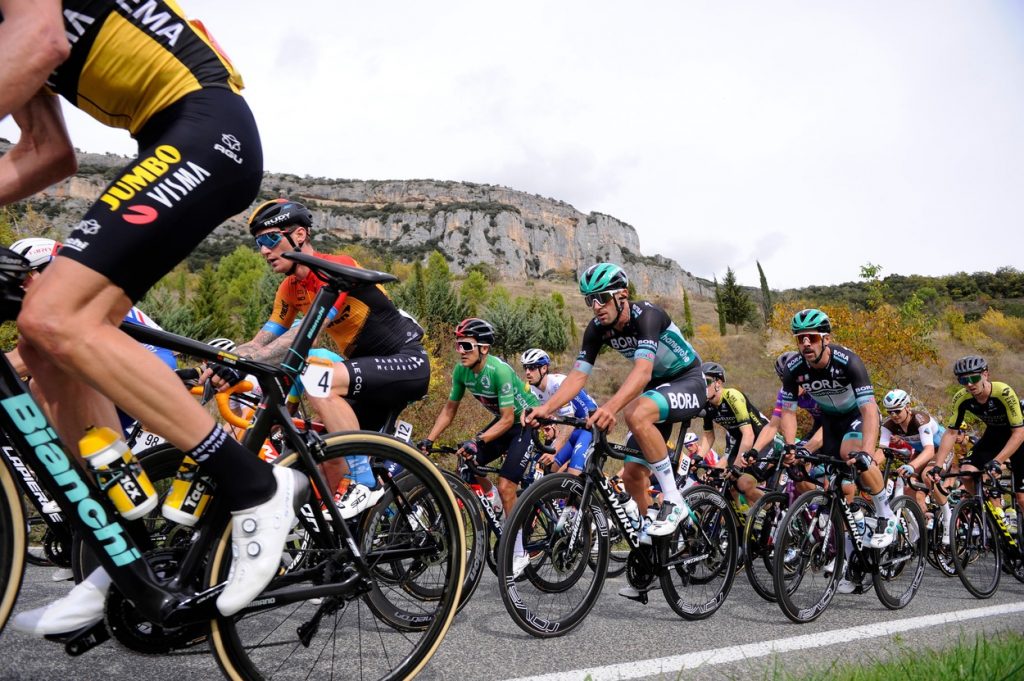These races are called Grand Tours for a reason. They are designed to test the best cyclists and cycling teams in the world to decide who is the best. Let’s see if an average amateur cyclist has what it takes in terms of strength, power, bike handling skills, and even eating abilities.

Endurance
The first test would be the sheer distance that cyclists have to cover. The Tours are often over 3500 km, which is like cycling from London to Paris about 7 times! And riders are expected to finish within only 23 days out of which they rest for two. The average cyclist would probably need at least 3 months, not 3 weeks to finish.
Leg power
The pros put out upwards of 400 watts of power on average to sustain blazing average speeds of 40 km/h and much higher during time trials. And sprinters commonly cross 1400 watts of power when fighting for a stage win. All of this means that they are able to finish the 200km stages in under 5 hours. In comparison, an average cycling enthusiast can maintain an average power of only about 200 watts and a speed of about 25 km/h. This would mean the same stage would take them at least 8 hours.

Pain threshold
The huge distances Grand Tours cover put an immense strain not just on the cyclists’ legs but their whole body. They test every muscle and joint in the body, especially the contact points like hands, feet, and butt. An amateur who is not used to riding 200 km every day would struggle with swelling, chafing, bleeding, and a lot of pain just to stay on the bike. Plus, there’s a significant risk of injuries due to crosswinds, roadside obstacles, and crashes. Pros often get small cuts, bruises, scrapes to their knees and elbows and continue racing.
Stomach capacity
Cycling for so many days at such high intensity requires a lot of energy. It is estimated that riders burn more than 100000 calories during those three weeks of competition. That’s equivalent of 275 Big Macs or 114 kg of steak or 56 kg of ice cream! Hardly any other endurance event on the planet can be a match for the Grand Tours in terms of the amount of food consumed. Let’s compare with some other sports.
-
- Ironman triathlon: 7000-10000 calories (per 9 hours of racing, single-day event)
- Grand Tours: 5000-8000 calories (per stage, 23 days in a row)
- Marathon: 2000-3500 calories (per 2-3 hours of racing)
- Swimming: 1500-2500 (per 10km of open water swim)

To put this in perspective, a regular person needs about 2000-2500 calories for the whole day. An amateur cyclist might need between 3000 and 4000 calories per day when training. And let’s not forget about hydration. Pros often drink up to 10 litres of water per day, which is about 20 full 500ml bidons!
Discomfort tolerance
Grand Tours also test the riders’ tolerance for general discomfort. Cyclists have to deal with altitude and less oxygen in the mountains. They have to survive changes in temperature and extreme heat multiple days in a row. They don’t always ride on smooth asphalt, and there are millions of fans lining the roads. Most amateurs have very little experience riding in such environment.
Bike handling skills
The pros are often bombing downhill at extreme speeds of up to 90 km/h where the tiniest mistake can have literally fatal consequences. They have to know how to efficiently ride on cobble stones, they have to be proficient in drafting and riding inside the peloton. Most amateurs would not have the downhill skills and end up clutching the brakes, descending at snail speeds with terror in their eyes.

Mental and physical strength
There is one place that combines almost all of these challenges, the mountains. Getting up just one of the legendary climbs such as Alpe d’Huez, Le Mont Ventoux, Le Col du Tourmalet, or Le Col de l’Iseran with 2770 metres of elevation is something that would bring most trained amateurs to their physical and mental limits. Professional cyclists often do multiple climbs like this in one day and repeat it several days in a row crossing the Alps and Pyrenees mountains. Grand Tours have over 60 km of elevation on average, which is like climbing the Mount Everest 7x.
If you want to see how you stack up against the biggest challenge of these Grand Tours, you can try Le Col du Tourmalet yourself! Thanks to the Vuelta Fan Series powered by Rouvy, you can experience this magnificent climb on their virtual training platform.





